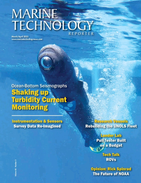Drilling the Earth’s Mantle Beneath the Atlantic
A team of scientists will set sail from Southampton to drill through the Earth’s mantle in the center of the Atlantic Ocean. They leave on board the Royal Research Ship James Cook on October 26, 2015 to explore the Atlantis Massif, a 4000 meter high underwater mountain.
This is the first time a UK research ship will be used for this branch of science. The expedition is conducted by the European Consortium for Ocean Research Drilling (ECORD) as part of the International Ocean Discovery Program (IODP). Usually ocean drilling is conducted using specialist drill ships to access the Earth’s deeper rocks. Two state-of-the-art robot drills will be controlled remotely by the scientists and engineers on the RRS James Cook.
Led by Co-Chief Scientists Gretchen Früh-Green, ETH Zurich, Switzerland, and Beth Orcutt, Bigelow Laboratory for Ocean Sciences, USA the team will collect cores of rocks using the specialist seabed rock drills. During the six-week expedition the team plan to drill at 11 sites in water depths of 720 to 1770 meters and recover cores between 50 and 70 meters in length.
“Scientifically the sea bed is remarkable because the Atlantis Massif is made up of rocks from the Earth's mantle”, says marine geologist Gretchen Früh-Green. “In the presence of seawater, these rocks produce methane, hydrogen and heat.” Such rock reactions excite scientists because they represent possible sources to fuel life in the absence of sunlight and may be analogous to conditions found on other planets, or early in Earth's history.
“Among other things we hope to learn more about what kind of life exists on and within rocks at the Atlantis Massif”, says marine microbiologist Beth Orcutt. “Moreover we shall investigate the fate of carbon. Do the reactions between rocks and seawater lead to carbon storage in the seafloor? And does this process impact the global carbon cycle and our climate?”
NOC’s National Marine Facilities Programm Manager, Colin Day said: “In the 20 years we have been here, it is one of the biggest mobilizations that NOC has undertaken from Southampton. Logistically, there has been months of planning but just getting the ship prepared has taken ten days – there is an extraordinary amount of specialist kit on board the Cook..”
The two rock drills installed on the RRS James Cook are operated by the British Geological Survey and MARUM, the Center for Marine Environmental Sciences in Bremen, Germany. It is the first expedition of this kind to use this type of remotely operated drilling technology.
The BGS RD2 is the latest generation of remotely operated subsea drills. This drill utilizes a wireline coring system and multiple core barrels and drill rods to continuously core in varying types of marine sediments and rock up to 50 m below the seabed in water depths ranging to 4,000 m and obtain core with a diameter of 61 mm. This drill is lowered to the seabed on an umbilical and once landed is decoupled from the ships motion allowing high quality cores to be collected. The drill is controlled remotely from the surface mother ship through the transmission of power and communications down the umbilical. An optical, acoustic and spectral gamma downhole has been developed to log the hole after coring.
The MARUM-MeBo drill rig is capable of sampling soft sediments and hard rocks down to 80 meters at the sea floor with a total core length of more than 70 meters. It can be operated in water depths up to 2000 meters. It is a portable drill rig which is remotely operated from the vessel. A steel armoured umbilical is used to lower the MARUM-MeBo70 to the seabed. Copper wires and fibre optics in the umbilical are used for energy supply and for communication.
In addition the ship has been built to meet the ICES Cooperative Research Report no. 209 – Underwater Noise of Research Vessels, so called ICES 209 standard, meaning she is one of the quietest research vessels currently afloat.
The RRS James Cook is built with a Dynamic Positioning (DP) system, enabling the ship to deploy large instruments and hold station in all but the most violent weather. There are berths for 32 researchers and 22 officers and crew. Her overall length: 89.2 meters with a beam of 18.6 meters.
The UK's involvement in the IODP expeditions is funded by the Natural Environment Research Council.

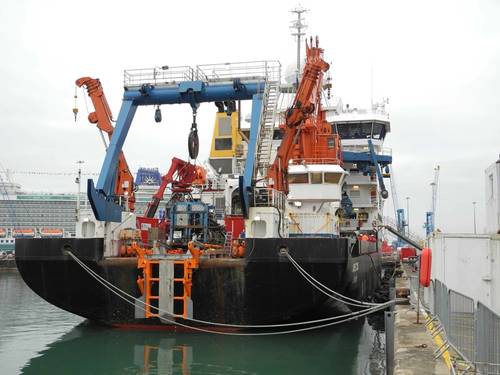

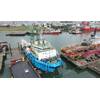
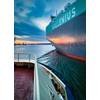
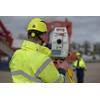
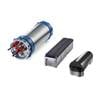
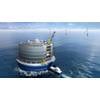






 February 2025
February 2025


